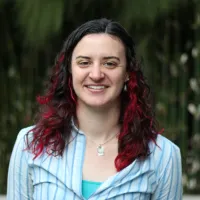In face of escalating housing costs, advisory committee offers recommendations for short-term changes
San Francisco is an expensive city, and the UCSF students and administration knows it. Soon the senior leadership will decide what actions to take to respond to concerns over how affordable it is to live in San Francisco while being supported by a meager graduate student stipend or student loan package.
The UCSF administration seeks to address these concerns by tasking the housing advisory committee with finding immediately implementable housing solutions. In the next two weeks, senior leadership will hear the housing advisory committee’s recommendations and decide which, if any, to implement.
“People are actively considering not coming to San Francisco because of housing,” said Leslie Santos, a committee member and the director of campus housing.
To increase access to below-market-rate housing necessary for recruiting top students, faculty and postdocs to UCSF, the housing advisory committee was tasked with the challenge of making more housing available to incoming students without actually having any additional inventory until 2019 at the earliest.
“None of the options were attractive,” said committee member Jason Cyster, a UCSF professor and former director of the BMS graduate program. The need for more UCSF housing was recognized by all, he said, but the committee’s purpose was to “give specific recommendations to the chancellor on how to use the housing that we actually have.”
According to Santos, “The priority was to help new people to San Francisco get settled.”
The housing advisory committee included faculty from across all departments at UCSF, staff from the Office of Student Life and the Housing Office, and students—including one of the reporters of this story. The housing advisory committee is going to strongly recommend to the senior leadership that securing additional funds to subsidize housing is critical to the mission of recruiting and retaining top talent here at UCSF.
Other recommendations included prioritizing incoming students over currently enrolled students in order to aid in the transition to San Francisco. To make that happen, the housing advisory committee will also recommend that new students have priority in getting placed in housing over currently enrolled students.
One challenge to ensuring incoming students have access to housing is that about 25 percent of the current housing inventory is being occupied by students who have been in housing since 2013. Prior to 2013, professional students could stay in housing for five years, and graduate students could stay for six years.
The committee also recommended that the timing of leases be adjusted such that they end during the summer, regardless of when they start during the year. “We were trying to improve the situation for the large cohort of students arriving in the summer period,” said Cyster.
Currently, people are limited to two years in student housing, and those limits will remain the same. To encourage older students who have already taken advantage of several years of below-market rents, those who have been in housing for three years or more may be subject to additional rent increases, beyond the standard rental increase.
In addition to the recommendations made by the housing advisory committee, the Office of Financial Aid is compiling the results of a cost-of-living survey. This survey is similar to one conducted by the Graduate Student’s Association in 2012. The 2012 survey shows that while most students were able to eventually find a place to live in the city, many students struggled if they had to move, on average paying at least $100 more per month after a move.
One anonymous student said in a comment on the GSA survey, “Living in San Francisco is so expensive, I decided to move to Oakland. Now, my commute is long, but at least my rent is reasonable.”
Current students also remain pessimistic about the housing situation. “The campus housing advisory committee is playing a shell game, quickly moving around terms and eligibilities with the promise that under one of these schemes UCSF will find a magic pea that can solve its housing ills,” said Richard Parenteau, an MSTP student, in an e-mail. “Yet the truth is this: there is no pea, and no amount of shuffling the units we have in campus housing will solve our current housing crisis.”
When and how the senior leadership will take tangible steps in response to the housing advisory committee’s recommendations, and the degree to which they improve the lives of UCSF students, remain to be seen.
This is the second part in a series of articles the Synapse is writing covering the housing challenges faced by UCSF students. The last issue of Synapse explored the history of campus housing at UCSF and the new housing projected in the recent UCSF Long Range Development Plan.



